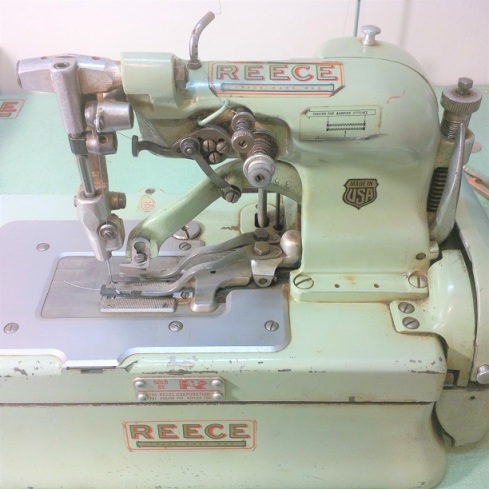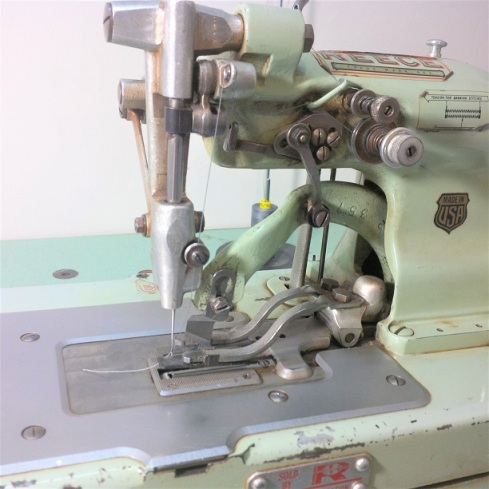Growing the Line-up

A sewing contractor loves sewing machines as much as she loves her shop, her work, and her business in sum. For me, my sewing line-up is like a large family which I have raised to adulthood, mostly with success (there is still a machine that asks me for money now and then); I beam with pride as I recount their interesting professions – each one is really good at at least one thing – and brag about what they have done with their lives (tote bags, crop pants, etc). It’s also like baby fever that never subsides: I am always wishing for just one more.
There is a reason why you should love sewing machines too, whether you are looking to have a design produced or just like purchasing good designs: proper machinery defines the type and level of goods that can be made in any shop or factory, and also the time it takes to produce them. For instance, a better quality shirt will often have a flat fell seam along the side and running up through the sleeve. This is a special seam that wraps all the cut fabric edges into a unique fold and is held flat with two rows of stitching. The finished look is neat and uniform, and it is a strong seam that wears well. Without the right machine, this type of seam would take at least three passes with a basic single needle machine – one to attach front and back, one to catch the folded seam allowance, and one to complete the double stitching look… and quite possibly a trip to the ironing board somewhere in there to make sure the fold is consistent. Plus a fair amount of struggling to topstitch into the narrow part of the sleeve where it meets the cuff. With the right machine, one can do all of this in one pass, and expect a professional result without the struggle. Hence, a beautiful finish done in less time, costing the designer less to make, and allowing that designer to sell at retail at a lower price point.
It’s good for everyone! Fun for me to have all these unique machines, more options in design and construction, and a reasonable price point at the end.
So here are the newest machines in the line-up: an industrial buttonholer, the Reece S2, and the Chandew 581 button sew, which I bought from a retired tailor on a whim. Fraternal twins, you might say.
In the past I have used a vintage domestic to make buttonholes. They were beautiful buttonholes but man, they were slow to make. This new-to-me Reece can sew and cut an entire shirt placket in less time than I could make a single buttonhole on my old setup. Jackpot! And it’s a similar story with the button sew – a single button, sewn on by hand, with all the threading, getting caught in thread, running out of thread, sewing, winding, tacking, and trimming can easily take 2 minutes each (which is 100% cost prohibitive in production!!). Now I am sewing on buttons in a true fraction of the time, and passing along the efficiency to the labels I sew for.
I won’t get rid of my vintage domestic though. I’ll take it with me to my grave.



